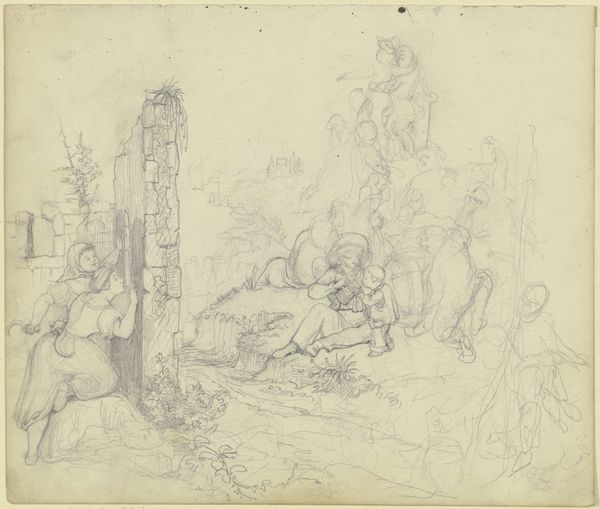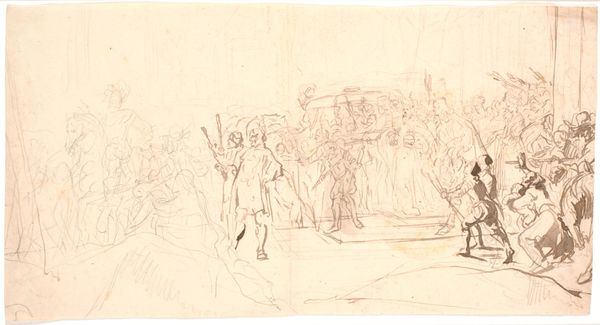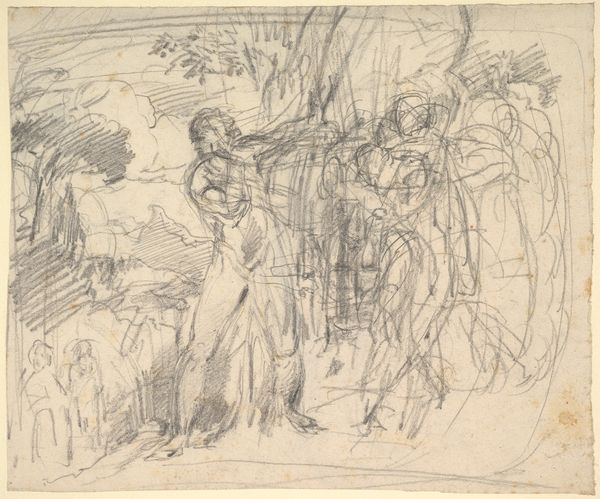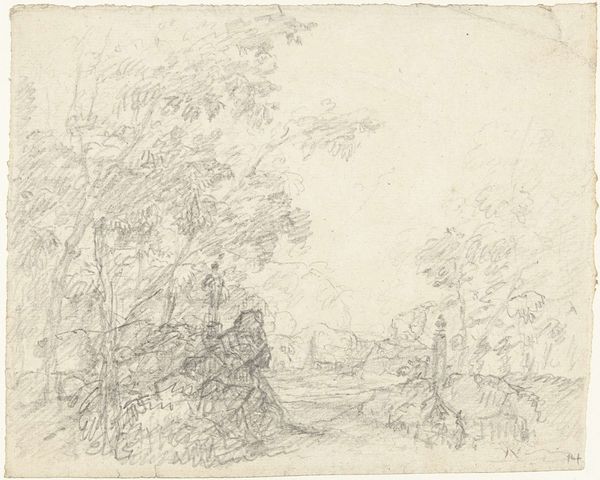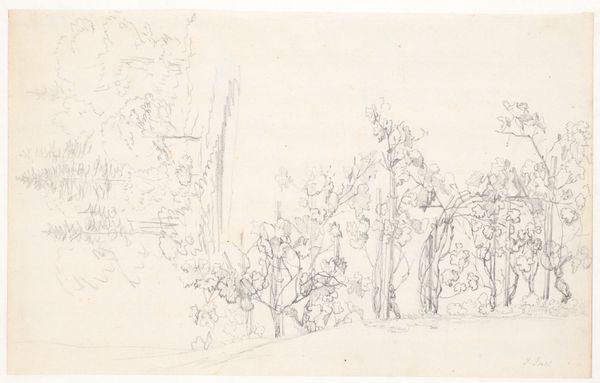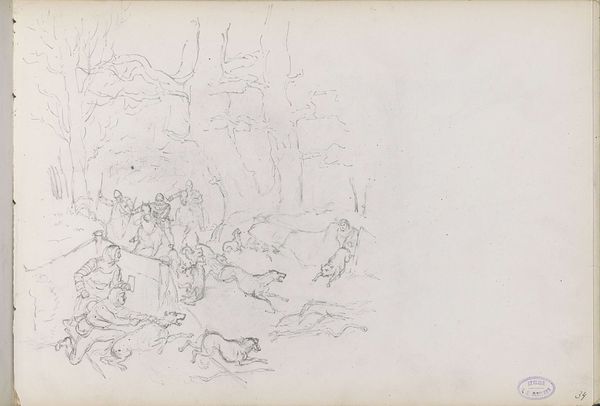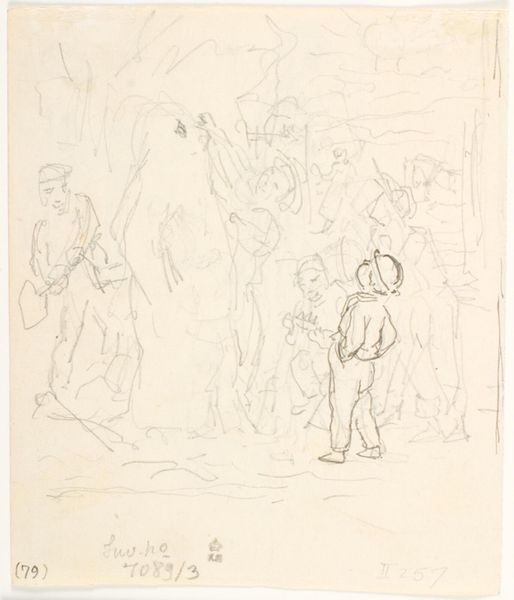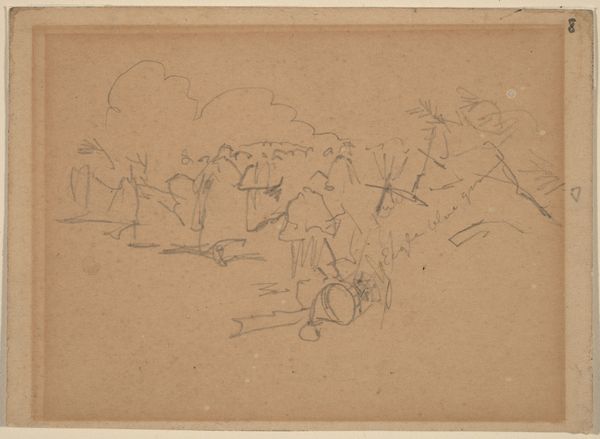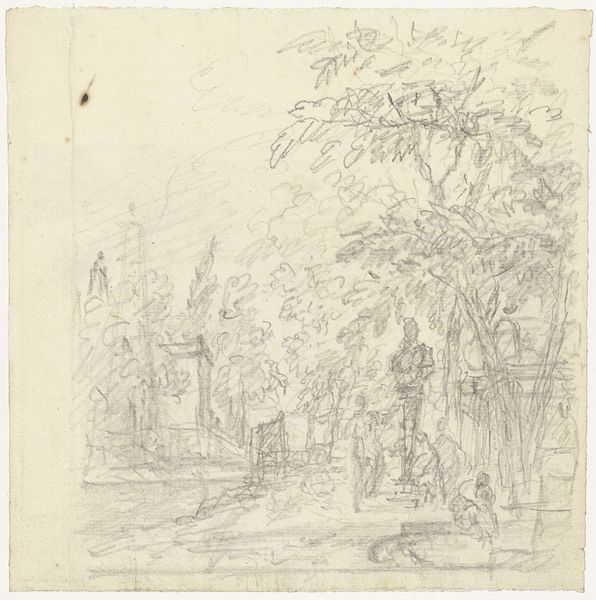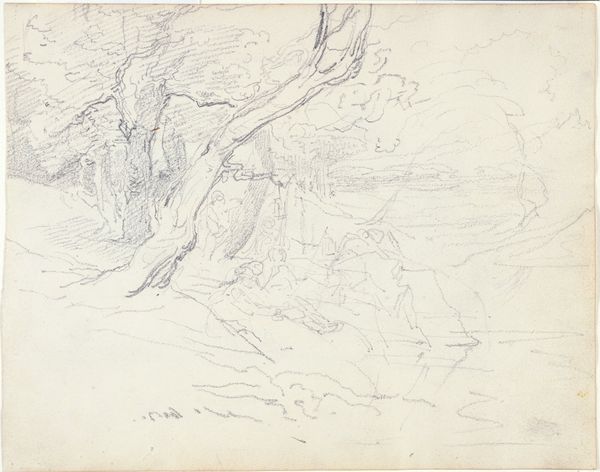
drawing, pencil
#
drawing
#
pencil sketch
#
landscape
#
figuration
#
pencil
#
history-painting
#
academic-art
Dimensions: height 155 mm, width 202 mm
Copyright: Rijks Museum: Open Domain
Editor: Here we have Willem de Heusch’s "Schets van offerscène," a pencil drawing created sometime between 1635 and 1692. It has a hushed and preparatory air to it. What’s your read on this sketch? Curator: Well, it’s less a stage whisper and more a charcoal confession, wouldn’t you say? There's a delicate chaos here, a story brewing just beneath the surface. Do you get the sense that it could be an abandoned concept or maybe the cornerstone of a much bigger composition? Editor: I see what you mean. It’s not quite complete. Curator: Exactly! For me, that incompleteness is precisely where the magic resides. De Heusch invites us into his creative process. The sketchy lines – they dance and weave, revealing a classical theme, right? What historical narratives come to mind? Editor: Sacrifice… maybe something from Greek or Roman mythology? Curator: Yes, think Arcadia. The work isn’t just about recalling those classical ideals, but reimagining them. It’s like a whispered secret between the artist and the viewer, where we get to complete the tale. Editor: It's amazing how a simple pencil sketch can contain so much narrative potential. The open-endedness really allows for a personal connection with the art. Curator: Precisely. Incomplete doesn't mean unfinished—it means unconfined, still echoing after all these years.
Comments
No comments
Be the first to comment and join the conversation on the ultimate creative platform.
